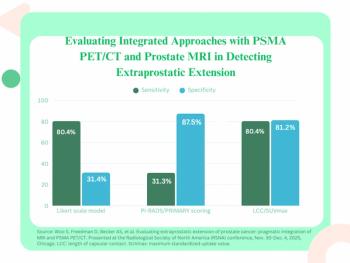
PACS, politics, and human nature pave the long road to adoption
At yet another talk on the many benefits of PACS, I asked the speaker why, if PACS have so many benefits and are so cost effective, haven't more people adopted them? The answer was somewhat convoluted, but two major issues appeared: Costs, in
At yet another talk on the many benefits of PACS, I asked the speaker why, if PACS have so many benefits and are so cost effective, haven't more people adopted them?
The answer was somewhat convoluted, but two major issues appeared: Costs, in particular the allocation of costs, and the natural human desire to avoid change.
I must admit that I am one of those people who feel comfortable with the systems I have. I still carry my old paper agenda instead of a Palm organizer, preferring to flip pages to figure out whether I have a potential conflict on a certain date or look in a phone list for the number. But then again, I am somewhat conservative - I was the last in my family to carry a mobile phone. So I can sympathize with people who want to be convinced that a new system or alternative works better than what they have now. This is probably one of the barriers for PACS implementation.
The fact that PACS have had several false starts does not help. I have visited several hospitals that have PACS viewing stations that are not even switched on and have not being used by anyone for weeks. On the other hand, I have talked with people who would never want to go back to film and are more confident about their interpretations because they know they can find a patient folder and have access to prior studies.
If a new technology provides a major advantage, such as making available information that was unavailable or available only after a lot of searching, then there is a clear reason for adopting that technology.
I believe that we are at the point where the advantages to PACS are clearly demonstrable. In addition, the cost factor seems to be fading as an issue. Implementation is still somewhat expensive, but consistent reports are coming from institutions that are able to pay for the system within a period of three to five years, based on PACS-generated savings.
The issue is quite often the allocation of cost. In this regard, major organizations such as Veterans Affairs or the Department of Defense have an advantage. They can decide from the top that investing in this technology not only makes sense but is almost a necessity due to budget limits and cuts.
It is very strange to see that the VA has installed PACS in more than 25% of its facilities, while other major healthcare organizations in the private sector are lagging. This may reflect the "who is paying for it?" political struggle. Will radiology foot the bill, or will it be the hospital? What if the radiologist group is a private practice? When it comes to the network infrastructure and other facilities such as the computer room, will information services foot the bill? These questions make the PACS investment much more difficult than, say, the purchase of a new open MRI for an outpatient clinic.
Do PACS make sense? Yes, I believe it is possible to demonstrate major advantages. Just listen to the many lectures at meetings such as SCAR and read the trade press and literature. Are PACS cost effective? Yes, indeed, especially when taking into account the advantages beyond radiology, such as the impact on referring physicians who will have easy and ready access to images and diagnostic reports.
Will everyone start converting to PACS? Here is where the issue of feeling uncomfortable with change arises. Human behavior will definitely slow adoption of PACS. The cost allocation issue will probably be a major barrier in the foreseeable future. Politics - who is paying for what and turf wars (does radiology, IS, or even the CFO own PACS?) - will also play a role.
Will widespread PACS adoption happen? I am convinced of it. How soon? It depends largely on human nature.
Herman Oosterwijk is president of OTech, a healthcare technology training and consulting firm. He is active in the DICOM and HL7 standardization effort and can be reached via his Web site (http://www.otechimg.com), which is also a good resource for publications and books regarding PACS connectivity.
Newsletter
Stay at the forefront of radiology with the Diagnostic Imaging newsletter, delivering the latest news, clinical insights, and imaging advancements for today’s radiologists.




























